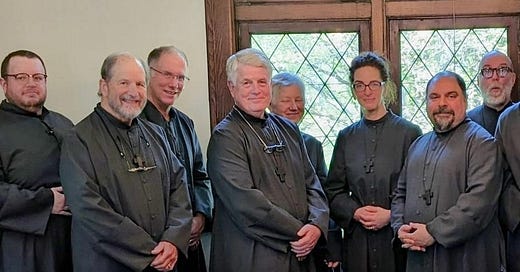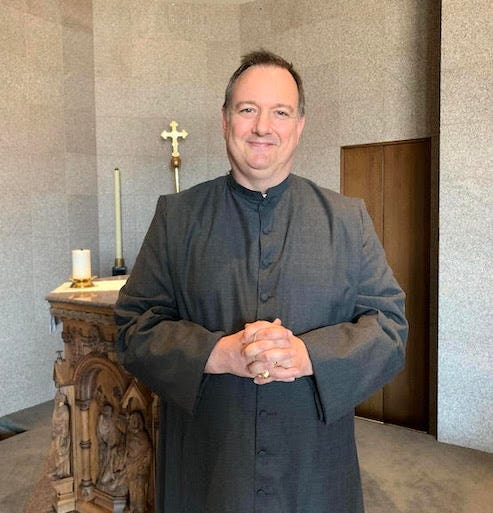On this, the Feast of Saint Benedict we have an offering from Brother Poulson, OA, a Professed Member of the Order of the Ascension and the Bishop of the Diocese of Oklahoma.
It’s been a long time since I studied biology, but on this feast day of Saint Benedict, I find myself thinking about membranes. Benedict’s Rule helps the Christian communities that follow it create a kind of membrane that both separates them from aspects of the outside world, while also interacting with it, bringing in and sending out what are needed for the organism’s health.
Almost no Benedictine monasteries or convents are completely cut off from the world. However self-sufficient the community, some of the basics of life must usually be brought in. Some of the professed religious may have ministries outside of the “membrane.” And, most importantly, Benedictine communities are known for their profound hospitality, seeing the guest as Christ.
Perhaps Benedict’s greatest legacy is how many of the communities that follow his Rule continue not only to exist, but to thrive in our modern world, some 1500 years after he compiled it.
My own main interest, as someone in a dispersed Benedictine community (orderoftheascension.org) with a modified Benedictine Rule, is how might the wider, non-monastic Church be blessed and shaped by God through Benedict’s witness, down the ages. I would highlight three aspects.
First, our congregations can keep a pattern of prayer and worship. As anyone who has gone on retreat at a Benedictine community can attest, there is something powerful about how God works on us through the pattern of prayer, even for a few days or a week.
Congregations that move past the Sunday morning only routine by adding the daily prayers of the Church (the Daily Office) offer a deep hospitality to members and guests alike who seek Christ. This is not as difficult as it may seem. A committed group of fewer than 10 clergy and lay people can maintain a twice a day pattern, and fewer still for once daily in the morning or evening. A time of contemplative dwelling in Holy Scripture could be added before or after, another venerable Benedictine practice of listening to God.
Second, congregations can practice hospitality. How many of our beautiful sacred spaces stand empty and locked tight most of the time? Opening our doors not only for daily prayer, but as places of silence and refuge from the outside world, and keeping library hours for reading would embody our theology of welcome. Meals together are some of the essential acts of community-building in Benedictine communities, and can do the same in our congregations among guests and friends.
And lastly, friendship. The Benedictine Rule is designed as a “school for the Lord’s service” and works by making room for friendships to develop, for encouragement, support, and occasionally correction. Our healthiest congregations nurture Christian friendship in small groups, and do so with intention, not just settling for putting out the coffee pot (though that’s a good start!).
Congregations can find in this ancient Rule inspiration and practical tools for keeping a healthy membrane that protects and nourishes the community within, through patterns of prayer and friendship that connect us with Christ and one another, while engaging with the outside world as disciples, serving the vulnerable, and inviting others into the loving hospitality of God.
Blessings,
Poulson
The Right Reverend Poulson Reed, OA
Bishop, The Episcopal Diocese of Oklahoma





